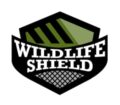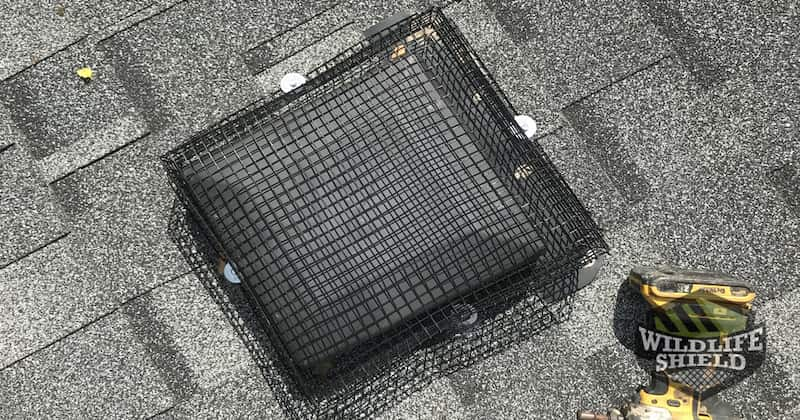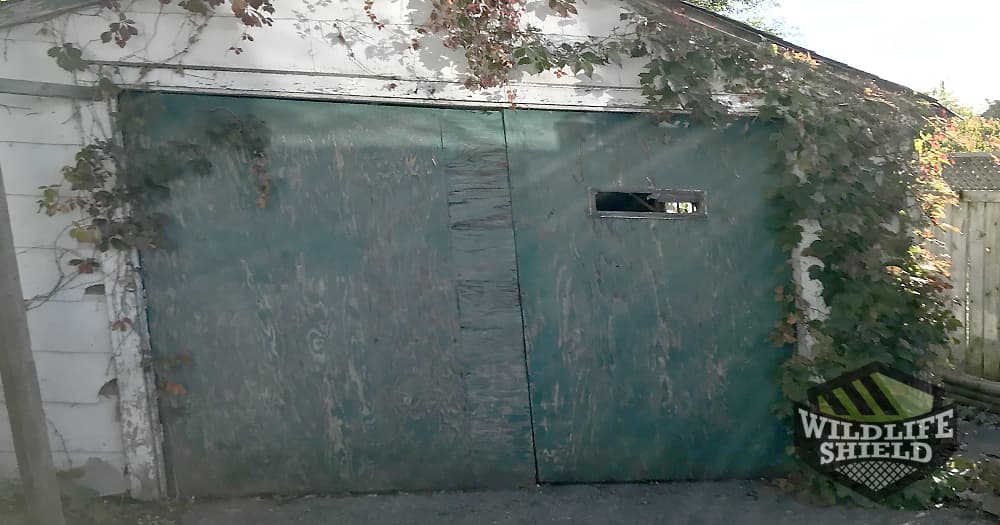This case will take a look at a family of skunks that moved into a cavity under a shed in an Oshawa neighbourhood. After we performed our work to vacate these striped critters, a raccoon moved into the attic of the same shed, requiring us to return and deal with vacating the animal.
Oshawa, located in the Durham Region, is well known for being a car manufacturing city. In the late 1800s, it was already the home to many wagon factories. As more highways and rail links were built, the city’s development increased at a rapid speed.
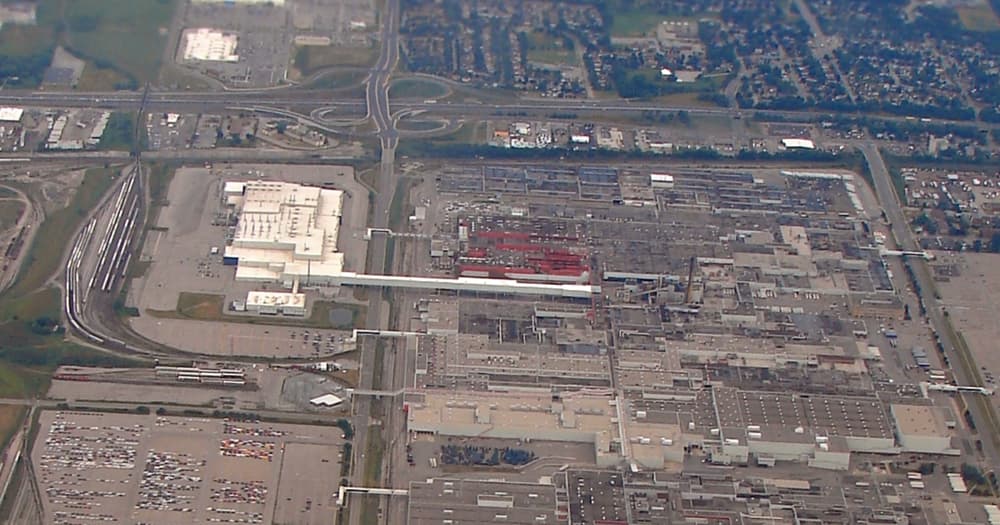
In 1907, the McLaughlin Motor Car Company began manufacturing cars with Buick engines. By 1918 the company had merged with Chevrolet and Buick and created what is now known as General Motors of Canada.
Inspection for possible skunks
A customer in Oshawa called us with concerns that a skunk may have made its way under a shed and has been living there for quite some time. The animal has been seen on the property and a hole is visible on the ground next to the base of shed.
We promptly dispatched one of our trained wildlife technicians to assess the situation and develop a planned solution for our customer.
Upon arrival, we preformed a full inspection of the property to determine the extent of the issue. It was determined by our technician that the skunk may have given birth to babies under the shed. A full exclusion would need to be completed to keep the animals out of this shed.
Our technician also identified a second potential living space the skunks may move into after vacating the shed- an extension deck. The deck’s under skirting was damaged and wild animals could easily enter the space. We recommended to our customer that both structures be secured.
Skunk exclusion
The customer agreed to excluding both structures. Our exclusions are meant to prevent wildlife from breaching into structures by placing durable and strong galvanized steel mesh along any areas that are vulnerable to breach.
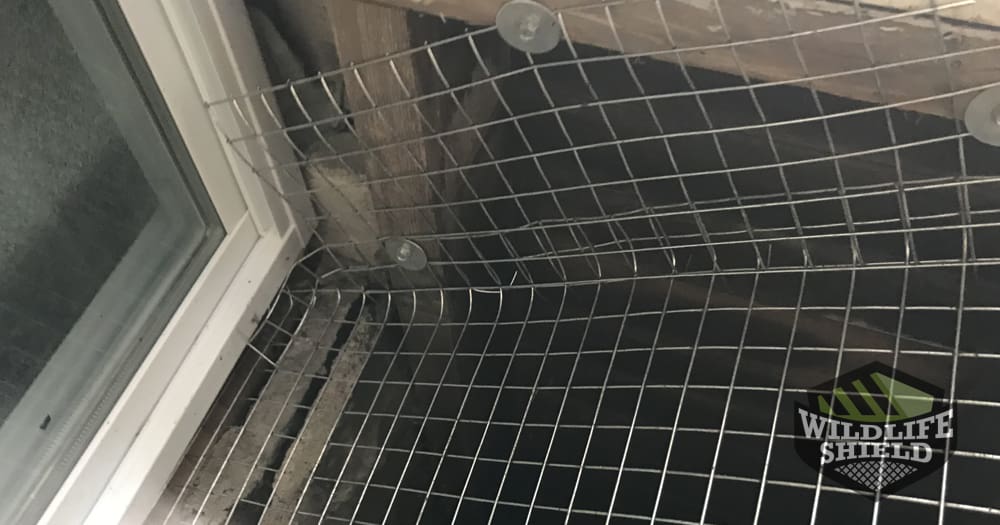
At this location, our technician placed mesh along the base of the shed where the skunk had burrowed its entrance. The mesh is installed against the wall and deep enough to prevent digging underneath. All potential entries to the deck sub surface were all sealed as well with the same durable mesh.
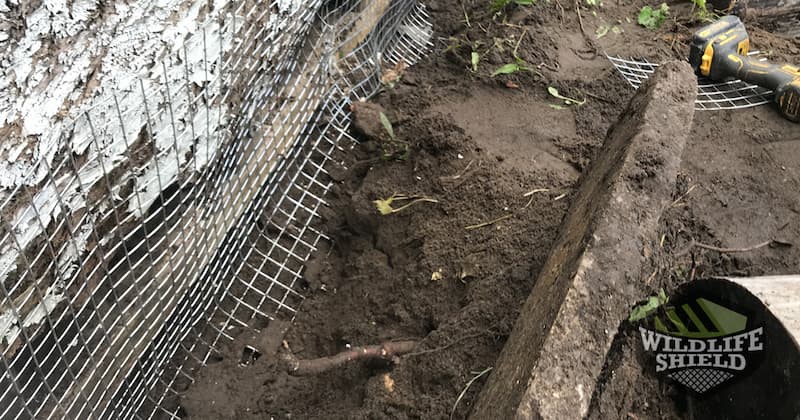
Because we are unable to tell where the animals may be hiding at the time of installation, we placed four one-way-doors at this location- two for adult skunks, and two for the babies. One set was installed on the shed and the other on the deck exclusion. These one-way-doors are especially designed to allow animals out of confined spaces in a safe and humane way. Their special doors prevent the animals from getting back inside. The doors stay in place for a few days to allow time for the skunks to move out. Once we are satisfied that they have vacated, we will return to remove them and patch up the holes.
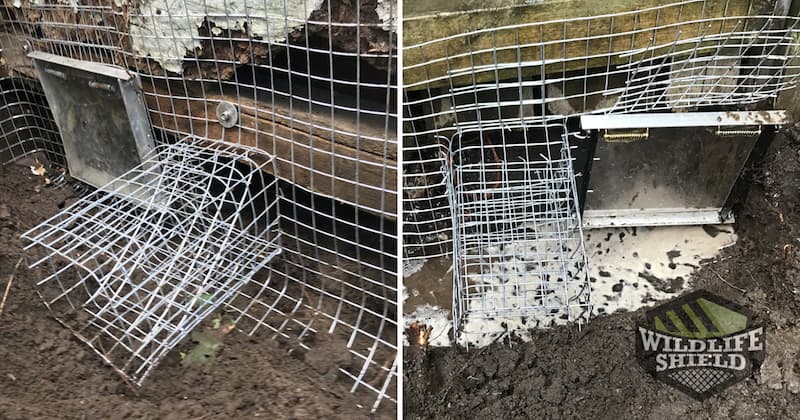
Follow up and raccoon exclusion
Our customer contacted us a few weeks later to inform us that there may be another creature now living in the roof of the shed. Noises had been heard at various times and a vent on the roof appeared damaged.
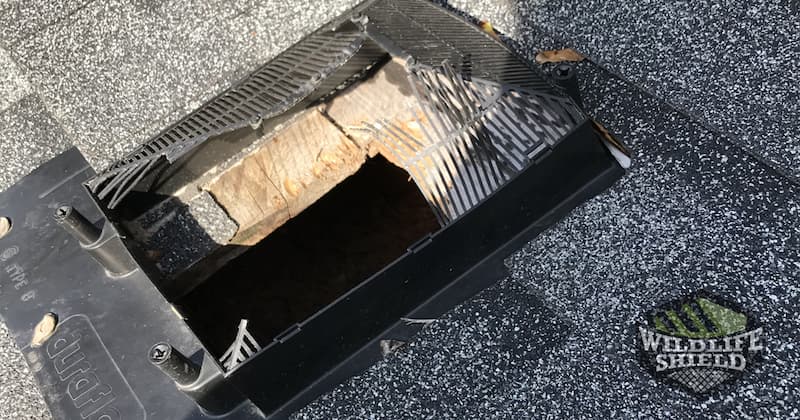
When our technician arrived, we discovered a roof vent that had been fully compromised, allowing racoons to have access to the shed’s attic space. We also identified a few smaller holes through the structure that could potentially allow other wildlife, such as squirrels, to enter the shed.
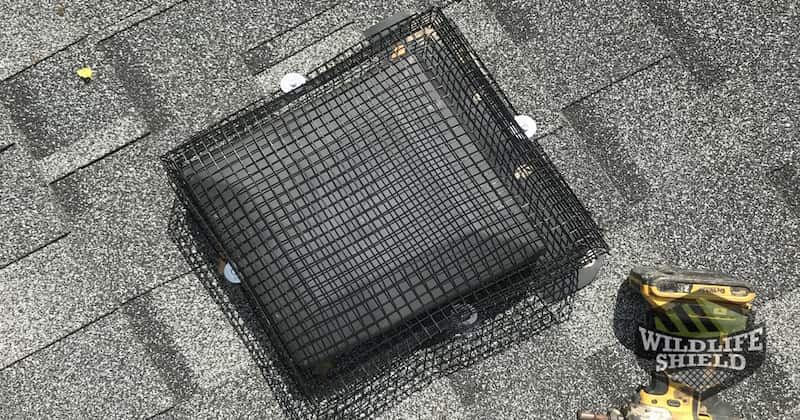
We proceed with roof proofing to keep the raccoons out of the structure. Similar to the skunk exclusion, we installed galvanized steel mesh over the breached areas along with a one-way-door to allow any remaining animals to exit the property. We also covered all holes around the shed- one on the door and one at a soffit intersection.
Conclusion
It is not unusual to have wildlife roaming around a residential neighbourhood, particularly if you are located near an open green space such as a ravine or park. These animals will often search for a quiet and secure space to provide shelter to themselves and their offspring. Skunks are notorious for burrowing holes under sheds, garages, and decks to create the necessary confined space to give birth to their babies.
Although these creatures are primarily harmless, they can spray anyone who may seem a threat to them or their babies. It is always a good idea to remove them from your property, especially if you have pets or children that frequent your yard. In doing so, the animals will be forced to move along to their next den.
In this case, we were able to not only vacate a skunk family, but also a raccoon that had breached into the same structure. It is a well-known fact that wildlife often attracts more wildlife. When animals smell other animals in an area, they will be curious and approach. If they identify a nearby space they can occupy, they will gladly do so.
All our exclusion work is backed by a 2-year warranty. If any of our installations are broken or removed by animals, we will return to repair or replace them.
